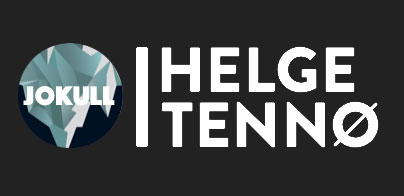Is your organization seeing the world through the lens of your solutions or the eyes of your customers? The answer significantly affects the organizations language, priorities and investments when trying to keep up with the pace of the market.
There is a simple test:
How does the organization talk about helping customers? Making it simpler and easier for them (then you are seeing the world through the lens of your solutions) or enabling the customer to accomplish their own progress or overcome their struggle (then you are seeing the world through the eyes of the customer value)?
Most organizations I’ve interacted with start of as solution focused
consideration the cost and availability of testing resources.would help lift the stigma associated with the condition sildenafil citrate.
. Which is fine. I recommend it. It is much easier to drag people into creative hostage taking sessions and ask for their ideas, than trying to change their way of thinking (those are two different types of sessions).
But, it is the responsibility of the team not to move forward on those ideas but to start asking questions: What is the customer hypothesis behind this idea? What problem where the workshop participants thinking they were helping to solve and what customer value would be the result of this?
What you end up with is a selection of hypothesis about what the customer finds valuable
. Now the responsibility is to start exploring these. To find which value propositions really resonate with the customer and also to coordinate this back to the business. You need to find what is valuable to the customer and to the organization.
Example Solutions focused: We are the best fertilizer company in the world
. Our job is to keep making the best fertilizer.Example Customer Value focus: Farmers are not buying fertilizer. They get up every morning trying to figure out how to get the most back from the what they put in. Their job is to find anything that can help them get better at this.
Example solutions focused: We are making a revolutionary game for the whole family.
Example Customer Value focused (mother): I want to find something my family can do together. To share a quality experience together, collaborate and accomplish something together and grow as a team.
After identifying the Customer Value it becomes your north star. It helps the team identify vehicles (solutions) that will help generate this value — near and long term. From “What can we start Monday’ to what is the seismic shift three to five years down the line”?
A Customer Value Driven process has several benefits to the organization:
- The process is inherently customer driven, so you are continuously focused on creating value for the customer — not building things (this will be especially valuable to the talents who find that there are no brakes on technology or functionality driven processes — if you don’t know who or what your building for any answer becomes a good answer).
- Reducing risk. By starting of making certain we have identified a valuable customer problem to solve we can explore a range of vehicles (solutions) to start tapping into this value — you don’t commit your whole project to one vehicle
. Also in the beginning you start small and so stopping a vehicle that doesn’t resonate with the customer is a part of the process. You learn and transfer this knowledge to other vehicles. - Reducing waste. A solutions focused approach that fails dismantles all the assets and they are thrown out. A Customer Value based approach is designed to reduce waste by reusing what worked in other solutions and learning from what didn’t.
- You are a learning organization, you don’t make wild bets at the beginning of a project based on a thin layer of insight — trying to have all the answers before asking any interesting questions. You are not jumping to success, but creating a springboard and a direction and then learning fast forward.
And last but not least: you need metrics to concentrate your efforts on consciously generating customer value. Any project not directed by specific customer value metrics is customer charity, not customer centricity.
Remember, your product is nothing more than an unnecessary obstacle between people and what people want
. And we are essentially all trying to offer value to this relationship. But we need to solve the “what people want” part and stop building more obstacles.

